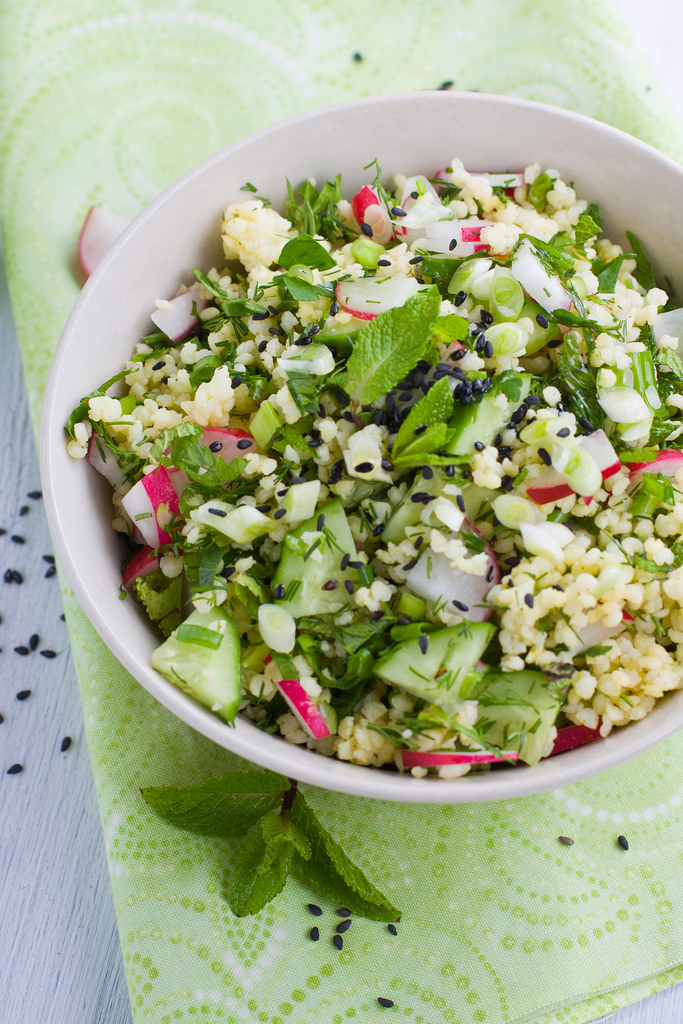Preparing your own grains & Millet salad recipe
Eating wholefoods is one of the most important ways to sustain good health and ensure you get optimal nutrition from your food!
“Whole grains” refers to the seed of plants such as wheat, rye, barley and maize. Whole grains are rich in fibre, and contain bioactive chemicals, enzymes, minerals and vitamins. Different grains have different benefits, so it is great to use a variety of them in your cooking. Delicious and healthy meals can be prepared from virtually any grain that you can buy.
Buying organic is important, as conventionally grown grains usually contain residues of agricultural chemicals, as well as having been fumigated to stop them being eaten by insects and rodents.
Preparing your own grains, instead of buying them ready prepared from the supermarkets, ensures that you will get maximum nutritional benefits from them. They will also be easier to digest and much better for the health of your digestive system!
The proper preparation of seed foods not only makes them more digestible but also preserves their nutrients. Grains and legumes alike should either be sprouted, soaked, fermented or naturally leavened, and then washed before consumption. These processes are imported as they will:
- deactivate enzymes inhibitors, which block the digestion of seeds
- neutralise phytic acid, which blocks mineral absorption
- neutralise tannins and lectins, which irritate the digestive tract
- begin to break down gluten, which is hard to digest
Soaking & cooking your grains
Firstly, it is important to use purified or filtered water, as the chemicals in tap water may hinder the grain development. Use a ratio of 2 cups of water to 1 cup of grains when soaking your grains. Seeds sprout after only a few hours of soaking at room temperature. However, it is best to let the process continue for between 12-24 hrs. During this time the grain shell will soften and its shoot will start to grow and release some toxins into the soaking water. Discard the water and then rinse the grains under running water and place them into a pot, add fresh water and cook the grain.
Below is a recipe using the grain Millet. Millet tastes similar to rice and can be used in recipes as a substitute to buckwheat, rice or quinoa.

Millet and crunchy vegetable salad with preserved lemon and goat cheese dressing.
Ingredients
- 2-cups water
- 1-cup millet
- Few sprigs of mint
- 1 bunch of radishes with greens removed cleaned and cut into chunks
- 1 Lebanese’s cucumber diced
- ½ bunch of spring onions cleaned and roughly chopped
- 1 tablespoon black sesame seeds
- ½ preserved lemon finely chopped
- 2 tablespoon of goat cheese
- 3 tablespoon of olive oil
- Juice of ½ a lemon
Method
- Place the millet with the water into a stockpot, cover with a lid and place onto a high heat.
- When the millet is boiling reduce the heat to a minimum and cook the millet for approx 25-30 minutes.
- Remove the lid and check if all the water has evaporated otherwise place the lid back on and cook a little longer.
- Spread the millet onto a plate and chill to room temperature
- In between, place preserved lemon goat cheese Olive oil and lemon juice into a salad bowl and cream together so it becomes like a thick salad dressing,
- Add all the other ingredients and combine well and serve.
This salad is delicious eaten as a main or as an accompaniment to meat, dish or tempeh dishes.
If you are interested in learning more about wholefoods, our book is available for sale: Trupps’ Wholefood Kitchen
To learn more about cooking whole grains, seeds and nuts then check out our “Whole grain, seeds & nuts Materclass on the Trupp Cooking School Calendar.


